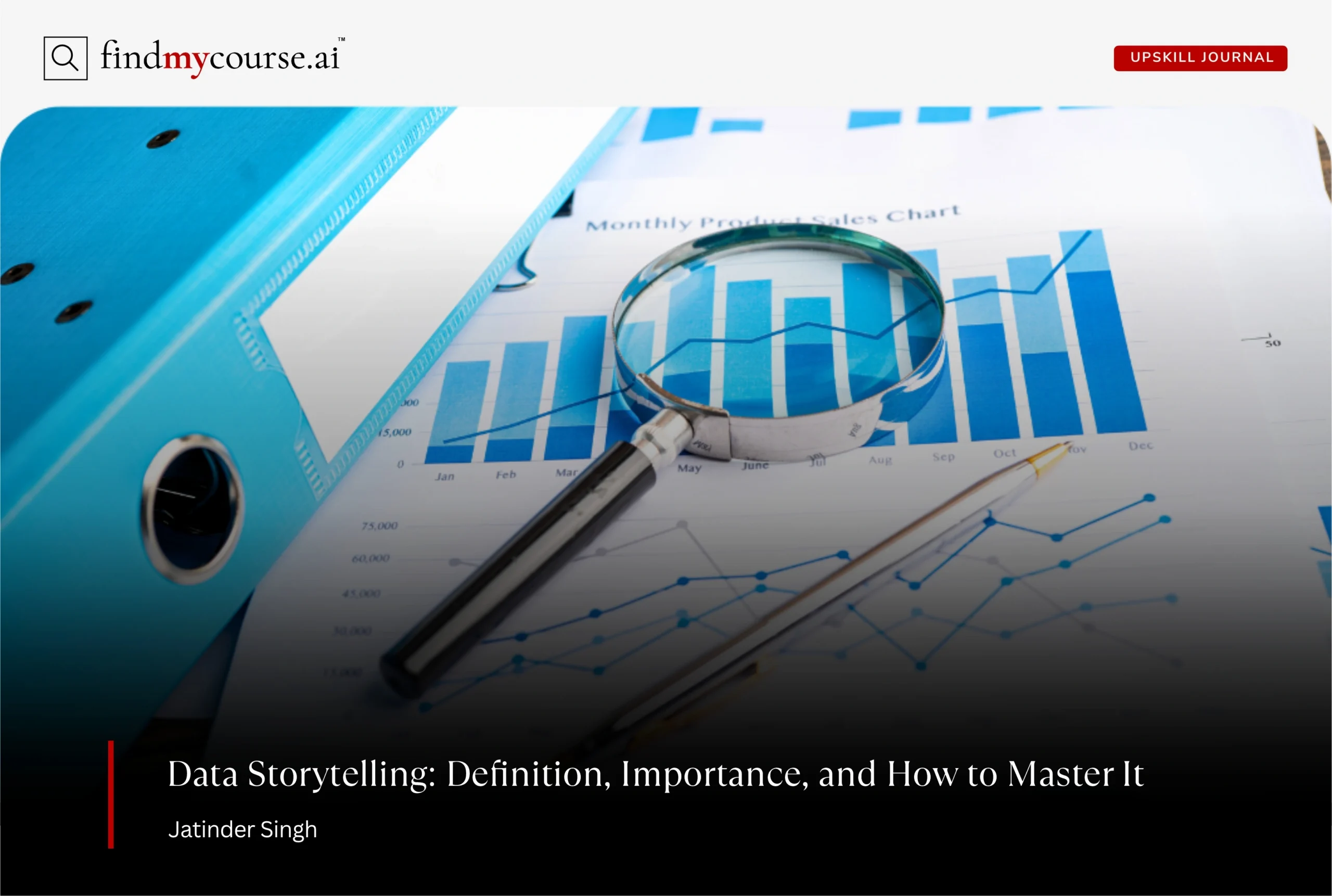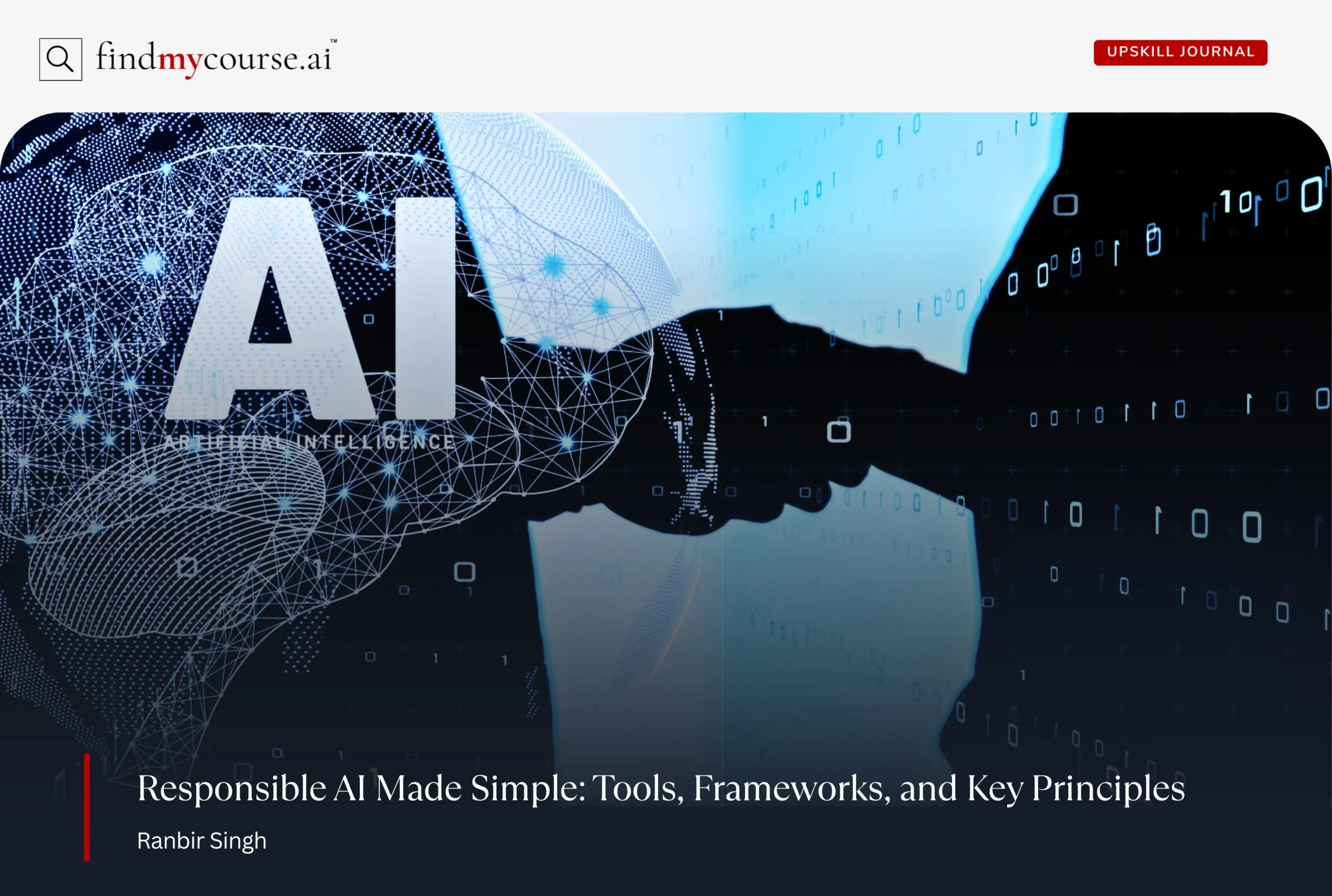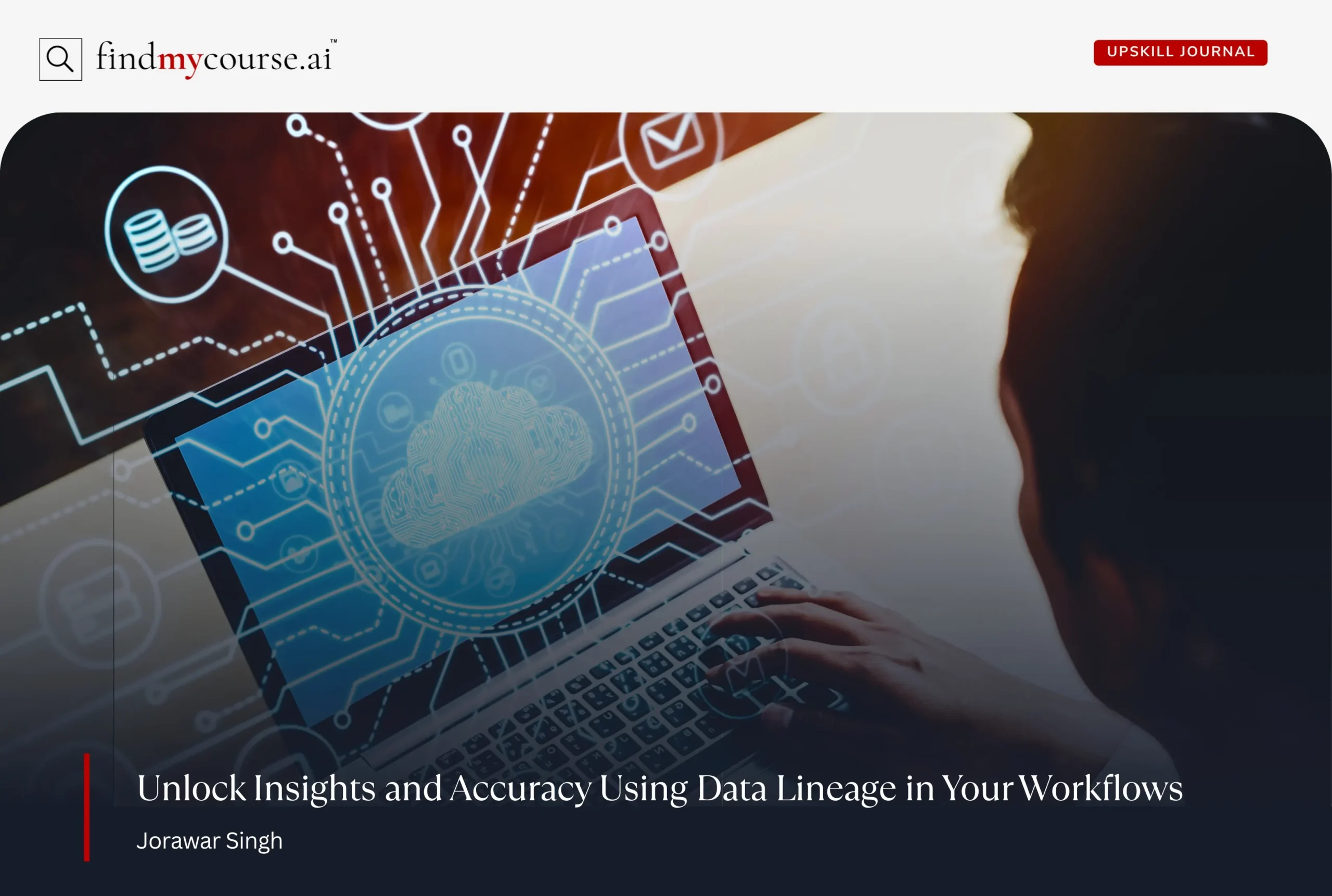We live in an era overflowing with numbers, dashboards, and endless reports. Yet raw data alone rarely drives action. The true power lies in Data Storytelling—the art of transforming facts into stories that spark understanding, emotion, and decision-making.
Whether you’re a business leader, a student, or a professional aiming to influence change, learning this skill can make your insights resonate far more effectively than numbers ever could.
What Is Data Storytelling?
Data storytelling is the art of transforming raw numbers into narratives that people can understand, care about, and act upon. It’s like being both a journalist and a guide for your data—making sense of the facts while showing why they matter. Numbers on their own can feel confusing or dull, but when given the right context, they become meaningful insights that drive decisions.
At its core, data storytelling weaves together three essential elements:
- Data – Every story begins with reliable evidence. Clean, accurate, and relevant data ensures the story is trustworthy. If the numbers are messy or misleading, the entire narrative will fall apart.
- Narrative – The storyline is the heartbeat of data storytelling. It sets the stage, highlights the challenge, and leads the audience toward a resolution. A strong narrative creates flow, linking facts to meaning so people not only understand what’s happening but also why it matters.
- Visuals – Charts, graphs, and maps turn complex information into something people can grasp at a glance. The most effective visuals are clear, uncluttered, and aligned with the story, reinforcing insights instead of distracting from them.
When these three elements work together, data stops being abstract and becomes relatable. Instead of overwhelming audiences with spreadsheets, storytelling takes them on a journey—from a question or problem, through insights, to a clear conclusion or action. In simple terms, it translates the language of data into the language of people, bridging logic with emotion so that facts not only make sense but also inspire change.
Why Does Data Storytelling Matter?
In many organizations, there’s a big gap between analysis and action. Analysts often produce complex reports and charts, but decision-makers struggle to see what they really mean. Data storytelling bridges that divide by translating analysis into insights that people can quickly understand and act on.
It matters because humans are naturally wired for stories. Studies indicate that people are more likely to remember information when it’s presented as a story rather than as isolated facts. Research by psychologist Jerome Bruner suggests that facts are 20 times more likely to be remembered if they’re part of a story. This underscores the effectiveness of storytelling in enhancing memory retention. When data is wrapped in a narrative, it does more than inform—it can persuade, inspire, and motivate
The impact is clear:
- For businesses: faster, more confident decisions, stronger customer engagement, and a competitive edge.
- For individuals: the ability to stand out—not just as someone who understands data, but as someone who makes it meaningful and actionable for others.
In short, data storytelling turns information into influence.
Step-by-Step: How to Master Data Storytelling
Mastering data storytelling is a skill you can build step by step. By following a clear process, you can turn raw data into stories that capture attention and drive action.
Step 1: Know Your Audience
Before diving into charts, ask: Who am I speaking to? What do they care about? An executive, for example, wants quick clarity, while a technical colleague may prefer detail. Tailoring your story ensures it resonates. Simple surveys with Google Forms can help you gather audience preferences efficiently.
Step 2: Define Your Message
Good stories have a central theme. Decide the single insight you want the audience to remember. Perhaps sales dropped, a customer segment is booming, or a project exceeded expectations. Without focus, stories scatter. Using Notion or Evernote to list key points can help clarify the central message.
Step 3: Collect and Clean Your Data
Gather accurate and up-to-date information. Eliminate noise, errors, or irrelevant details. Clean data gives your story credibility and prevents distractions. Excel or Google Sheets makes it straightforward to check for inconsistencies and prepare your data.
Step 4: Build the Narrative
Think of your story like a movie:
- Beginning – Set the scene. What’s the question or challenge?
- Middle – Show the tension. What does the data reveal?
- End – Deliver the resolution. What action should be taken?
For instance: “Customer complaints spiked last quarter. Looking deeper, we saw a 30% increase in delivery delays. To regain trust, investing in logistics is crucial.” Tools like Miro can help you sketch the story flow visually before finalizing it.
Step 5: Visualize the Insight
Choose visuals that amplify the point. Use a bar chart for comparisons, a line chart for trends, or a pie chart for proportions. Avoid clutter—your audience should “get it” in seconds. Visualization tools like Tableau or Google Data Studio make spotting patterns and trends quick and clear.
Step 6: Review and Refine
Read your story aloud. Does it flow? Are transitions smooth—using words like however, therefore, and consequently? Is the voice active? Trim jargon and polish until the story feels effortless. Collaborative platforms like Google Docs make reviewing and refining easier, especially with team input.
A Practical Example
Let’s say you need to explain why website traffic dropped last month.
Data: Analytics reveal an 18% drop in overall traffic, with mobile visits accounting for nearly all of the decline. Bounce rates from mobile devices spiked by 25%, and average session duration fell by almost half.
Narrative: “The drop wasn’t random—it coincided with a software update that slowed mobile page load times. Frustrated users left before exploring the site. Once we identified and fixed the performance issue, mobile engagement improved, and traffic began returning to normal levels.”
Visuals: A line chart can show total traffic over time, highlighting the sudden dip and recovery. To strengthen the story, you might also include a comparison bar chart of bounce rates (desktop vs. mobile) before and after the update, making the cause-and-effect crystal clear.
Action/Outcome: As a result of these insights, leadership allocated more budget to mobile optimization, ensuring performance issues were monitored more closely and preventing future revenue losses.
Your Learning Path to Data Storytelling Mastery
Knowing the principles is just the first step. To truly master data storytelling, you need to practice applying them. Here’s a clear learning path—with courses to guide you through theory, design, and real-world projects:
1. Build the Foundations
Start with the basics of how stories work, why narrative matters, and how data fits into a bigger picture. A great place to begin is Coursera’s “Storytelling and Persuading with Data and Digital Technologies”, which introduces narrative structures and persuasion techniques for data.
2. Learn Visual Design Principles
Next, focus on turning numbers into visuals people can instantly understand. The edX course “Intro to Data Storytelling” is beginner-friendly and walks you through using Google Data Studio while teaching design and visualization principles.
3. Practice Through Real Projects
Finally, apply what you’ve learned on real datasets and guided projects. Udemy’s “Data Storytelling for Business” give you hands-on practice in creating dashboards, presentations, and stories that drive decisions.
By following these steps—foundation, design, and practice—you’ll develop the skills to turn raw numbers into compelling stories that inform, persuade, and inspire.
Conclusion
Mastering data storytelling isn’t just about learning techniques—it’s about creating impact. By blending data, visuals, and narrative, you move beyond reports and charts to deliver insights that spark action and change. In a world overflowing with numbers, those who can craft stories will stand out as the voices that inspire decisions. And if at any point you feel stuck or unsure where to start, our AI assistant is here to provide tailored guidance, helping you sharpen your skills and grow with confidence.


